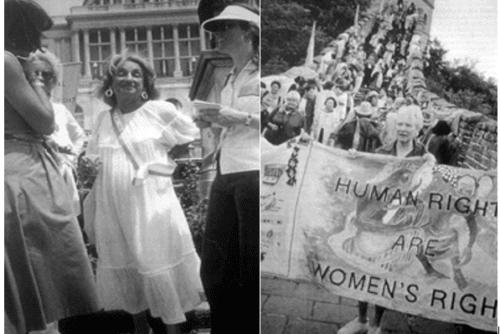Under Hurston’s definition of originality as the re-interpretation of existing idioms, Baker’s mimicry certainly qualifies as a creative act. An assiduous student of other performers’ routines, Baker was known to replicate the moves and tricks she observed, both onstage and off. Johnny Hudgins, a comic pantomimist who co-starred with Baker in The Chocolate Dandies, recalled that watching her was “like seeing [himself] in a mirror”: no matter how he changed his act, Baker managed to work up an imitation by the next night. 1 Mimicry played a more generalized role in Baker’s performance, too, surfacing in animal dances like her chicken-inspired head motions. It was also a key factor in what many scholars have argued was Baker’s parodic rendering of primitivist stereotypes. 2 Performing exaggerated versions of white ideas about African savagery, Baker simultaneously reproduced and subverted the very images she was playing up.
Just as we need to rethink the opposition between mimicry and originality, we also need to deconstruct the dichotomy between the choreographed and the improvised. While recent dance scholarship has begun to interrogate the demarcations between choreography as premeditated and intentional on the one hand and improvisation as impromptu and haphazard on the other, observers of African-American expressive practices have long recognized improvisation as a vital compositional technique that is neither unplanned nor undisciplined. As Jacqui Malone has written, “Contrary to popular opinion, black idiomatic dancers always improvise with intent … with the success of the improvisations depending on the mastery of the nuances and the elements of craft called for by the idiom.” 3 Jonathan David Jackson has likewise asserted that improvisation in black vernacular dancing “means the creative structuring, or the choreographing, of human movement in the moment of ritual performance.” 4
Jackson also depicts improvisation as contingent on the interplay between “individuation,” in which a dancer establishes “a unique identity according to her or his own physical capabilities, personal style, and capacity for invention,” and “ritualization,” in which performers forge community through the collective organization of movement. Baker’s “creative structuring” of movement depended on just such a give-and-take dynamic. In the moment of performance, she unfailingly articulated an individual style even as she drew on communally generated dance steps and aesthetic codes.
A sequence from the 1927 film La Sirène des Tropiques serves to illustrate. In a firelit scene that situates her character Papitou in a “tropical” Antillean setting, Baker dances inside a circle of other “natives,” accompanied by a small group of musicians. Unlike her solo performances caught on film, here Baker interacts with two other dancers. After watching a male dancer shake his hips and rear end, Baker jumps into the circle with him, and the two shimmy together, circle each other, and perform movements that alternately echo, contrast, and gently mock one another. Eventually, another woman dancer enters the circle, and Baker claps for the two. Throughout, the assembled crowd urges the dancers on by clapping, shouting, singing, and swaying to the rhythm. The creation of choreography here is simultaneously an individual and communal affair. 5
- Baker and Chase, 75. In Remembering Josephine (Indianapolis and New York: The Bobbs-Merrill Company, Inc., 1976), Stephen Papich also cites a number of male performers whom Baker imitated, including a comedy drag performer, Benny (of Bert and Benny), who performed with Bessie Smith, and Ivan Browning, a performer who collaborated with Eubie Blake.[↑]
- See, for example: Rose; Henderson; Carole Sweeney, From Fetish to Subject: Race, Modernism, and Primitivism, 1919-1935 (Westport, CT and London: Praeger, 2004); Michael Borshuk, “An Intelligence of the Body: Disruptive Parody through Dance in the Early Performances of Josephine Baker,” emBODYing Liberation: The Black Body in American Dance, ed. Dorothea Fischer-Hornung and Alison D. Goeller (Hamburg: Lit Verlag, 2001); and Wendy Martin, “‘Remembering the Jungle’: Josephine Baker and Modernist Parody,” in Prehistories of the Future: The Primitivist Project and the Culture of Modernism, ed. Elazar Barkan and Ronald Bush (Stanford: Stanford University Press, 1995), 310-25.[↑]
- Jacqui Malone, Steppin’ on the Blues: The Visible Rhythms of African American Dance (Urbana and Chicago: University of Illinois Press, 1996), 34.[↑]
- Jonathan David Jackson, “Improvisation in African-American Vernacular Dancing,” Dance Research Journal 33, no. 2 (winter 2001/02): 44.[↑]
- There is no choreographer credited on the film. As Baker recalled, when it was time for her to go on, the director shouted, “‘It’s time for your belly dance.’ Because naturally Papitou danced exactly like Mademoiselle Baker of the Folies. ‘That’s one of the reasons people will come to see the film,’ Pepito gently explained.” (Baker and Bouillon, 72).[↑]



